12 Myths That Should Be Movies
Love and tragedy from the days of yore...
The Pomegranate Seeds
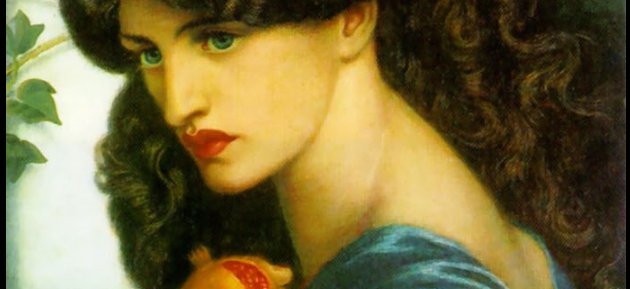
The Myth: Ah, nothing like a bit of unrequited love to get the pulse going. See, Greek Gods Zeus and Demeter had a daughter called Persephone, whose beauty was quite literally the thing of legend. Forgetting that the girl was his niece (and being all corrupt and stuff anyway), Hades decided that he wanted her hand in marriage.
But Zeus didn’t want to incur the wrath of his wife by acquiescing. So Hades kidnapped the virginal Persephone, and took her to his underworld home to become his wife.
Discovering her daughter gone, Demeter's anger stopped all plants from growing, causing people and animals to die of starvation. In response, Zeus asked Hades for his daughter back, arguing that if she has refused food in the Underworld she could return.
But Hades knew that Persephone had sucked on seven pomegranate seeds, and therefore belonged to him. A deal was struck, whereby Persephone would live nine months on earth, and three in the underworld, during which time all living things would perish under Demeter’s savage will...
Standout Scene: As Demeter grieves the loss of her daughter, the mortals feel the burn of her destructive misery. With trees withering and dying, crops perishing in the fields, and animals keeling over in the fields, a montage breaks our hearts as families die and return to the earth...
The Story Of Re
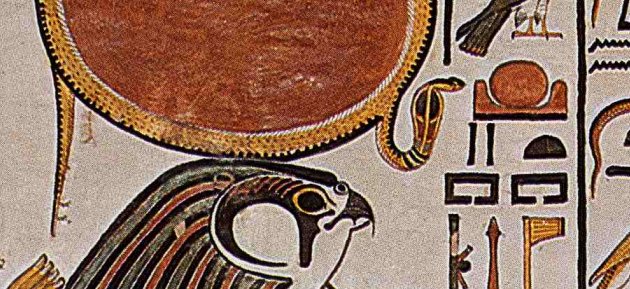
The Myth: A bit of Egyptian creation myth should banish those wretched memories of the Mummy sequels.
In the beginning, before Egypt was born, there was only darkness. Then, out of the river Nun was born Re, known as the Creator. Every word he uttered created something new in the world. Having forged the wind, the land and the seas, he finally created man and woman, and became a man himself as their ruling Pharaoh.
Bringing all the latest movie news, features, and reviews to your inbox
But as the ravages of time aged him, mortals laughed at him and ridiculed his old age. Flouting his laws, they committed evil acts.
Distraught at what he had made, Re saw fit to destroy mankind. But before that, he called together the other gods that he had created - Shu and Tefnut and Geb and Nut - and sought their counsel.
The gods advised that Re send his formidable warrior daughter Sekhmet down to exact revenge against mankind. Down into Egypt Sekhmet stormed, slaying any who were not loyal to their Pharaoh, turning the Nile red with blood. Then Re took pity on mankind and tricked Sekhmet into ending her rampage.
Re died an old man.
Standout Scene: The epic blade-to-blade battle in which Sekhmet descends on mankind and goes about her roaring rampage of revenge. Awesome.
Amaterasu

The Myth: In the oldest Japanese religion of Shinto, Amaterasu was the sun goddess. When her brother Susanowo treated her badly, Amaterasu hid in the cave of heaven and sealed the entrance with a gigantic stone.
Her hiding turned the world dark, and evil spirits were let loose into the night where they committed evil deeds against humankind.
In an effort to free the world from this death grip, the other gods resolved to attempt to lure Amaterasu out of hiding. They set up an extravagant party, resting a mirror by the cave and festooned trees with jewels. Uzume, the goddess of laughter, set in motion a dance.
Curiosity eventually got the better of Amaterasu, and she crept from the cave. When she caught her reflection in the mirror, she became so fascinated that she forgot her woes, and finally light and colour returned to the world.
Standout Scene: In a film that relies on opulent imagery and a quiet, meditative spirit, the gut-wrenching scene in which evil creeps into the world and causes husbands to kill their wives in their sleep and children to drown their pussy cats holds a quietly terrifying power.
Seven Against Thebes

The Myth: In a deal that sought to establish fairness, Oedipus’ two sons Eteocles and Polynices agreed to rule their father’s kingdom in turn over alternate years.
But when Eteocles refused to allow his brother to take the throne one year, Polynices raised an army that was championed by seven captains to take their kingdom of Thebes at each of the city’s seven gates.
As the threat of war hung in the air, the people of Thebes sat and contemplatde their fate at the hands of these two sparring brothers, while Eteocles ruminated on what should be done.
At last, Etecles agreed to meet and fight his brother at the seventh gate. They fought to the death, and both were destroyed.
Standout Scene: The final bitter, bloody confrontation between the two brothers is the sucker-punch. But a quiet moment when a young boy cries while being put to bed by his mother - crying because he doesn't understand the chaos of war and doesn't want to die - gives the film its heart.
Pandoras Box

The Myth: Forget about Lara Croft’s second big screen skirmish, this is the real Pandora. Except it wasn’t really a box she kept all the world’s woes in, but a large, sturdy jar.
In the original Geek myth, Pandora opens the jar, and unleashes terrible things on the world – among them sickness, disease, toils and hope.
Feminist readings interpret the jar as Pandora’s womb, arguing that the ancient Greeks didn’t favour female sexuality.
Standout Scene: The inevitable lesbian angle - whereby Pandora falls in love with a beautiful woman - gives rise to a lovely, soft-lit scene in which her lover convinces her to keep the fucking jar shut. Then a horrible drunk man comes and knocks the lid off by accident. Men.
The Mirror of Matsuyama
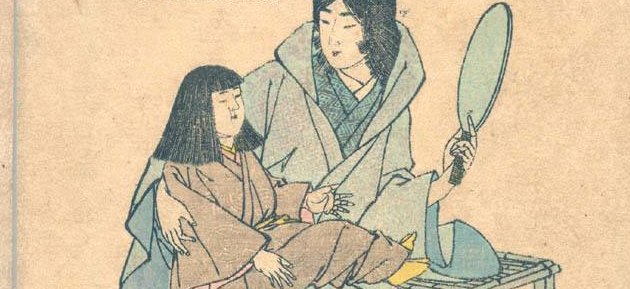
The Myth: Japanese legend tells of a woman whose husband bought her a mirror as a gift from a faraway land. Having never seen a mirror before, she believed that her reflection was in fact another woman staring out at her.
When the woman became ill, she left the mirror for her daughter, telling her that whenever she felt sad, she should look into the mirror and there her mother would be.
After her mother’s death, whenever she felt lonely, the young girl looked into the mirror. It was especially comforting when her father re-married a horrible woman who did her best to make her life a misery.
When one day her step-mother saw her crouching in the corner peering at something, the girl was accused of attempting to use magic to kill her father and step-mother.
Convincing her new husband of this, the step-mother sent him into a rage. But when the father confronted his daughter, she explained that when she felt sad she looked into the mirror and saw her mother’s face.
Pitying the girl, and understanding that she would never be able to concoct such an outrageous plan, her father forgave her and the family lived forever in peace.
Standout Scene: A heartbreaking time-lapse in which the daughter is seen crouched in the corner of a room staring into the mirror for hours on end.
The Girl With The Rose Red Slippers
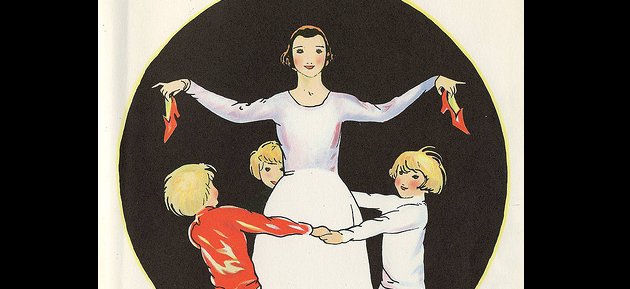
The Myth: A sort of Egyptian Cinderella, this one.
In a time of Egypt when the Pharaoh Amasis ruled, a Greek merchant called Charaxos settled in Naucratis, a town just up from the mouth of the Nile. One day, while at the marketplace, he happened upon a slave sale.
There, he spotted a beautiful girl of Greek descent, and resolved to save her from this hideous life. Purchasing her, he discovered that her name was Rhodopis, and he treated her like a daughter. Bestowing her with gifts, he bought her a shiny pair of twinkly rose red slippers.
One day while washing in a marble pool in the garden, an eagle swooped down and stole one of Rhodopis’ red slippers, and carried it back to Pharaoh Amasis. The Pharaoh, marvelling at the gorgeous slipper, resolved to marry whomsoever it fit, and sent his minions out to seek out its owner.
When the Pharaoh’s subjects finally discovered Rhodopis, she presented them with the slipper’s twin, and agreed to marry the Pharaoh, much to Charaxos’ delight. They lived happily ever after.
Standout Scene: The bit where the eagle swoops down, cos it would look really cool.
Cassandra
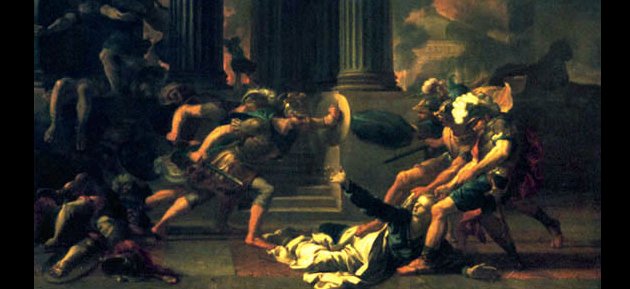
The Myth: The daughter King Priam and Queen Hecuba of Troy, Cassandra was granted the gift of foresight by Apollo, who was beguiled by her beauty. But when Cassandra didn’t return his love, Apollo cursed her so that nobody would believe her predictions.
Her story played out against the backdrop of the destruction of Troy, which she foresaw but was unable to do anything about. Her warning about the Trojan Horse went unbidden, and she foresaw the death of Agamemnon as well as her own end.
Tragedy plagued her entire life, which was eventually curtailed by Clytemnestra, who killed her after she had been kidnapped and raped by Ajax The Lesser.
Standout Scene: Cassandra stands watching from her balcony as Troy falls to the Trojans. It's all about the demented expression on her face: the joy that she was right, the horror that she couldn't stop it, the satisfaction that those who ignored her pleas are now suffering, the sadness at the suffering itself...
The Land Of The Dead

The Myth: It’s a wonderful afterlife, indeed.
When a father and son, Setna and Se-Osiris respectively, watched two funeral processions one day, they marvelled at how the first was festooned with riches, while the second was simple and sparse.
Se-Osiris told his father that he wished he would have a funeral like the second. Surprised, Setna didn’t understand his son’s reasoning. So Se-Osiris opened the gates to the afterlife to show his father the different fates of the pompous rich man and the kindly poor man.
Together, they entered the world of the dead, riding on their own souls – which resembled eagles – and watched as the newly-dead were challenged by the Door-Keeper.
There, the hearts of the dead were weighed for goodness. If the heart sank too low, Ammit The Devourer Of Hearts would bear the heart away, while the evil soul would be banished into the Pits of Fire.
Do-gooders would be let free into the Fields of Peace, rejoicing for all eternity.
Standout Scene: A break-neck scene in which the father and son mount their souls and swoop through the afterlife to the soaring strains of an epic Hans Zimmer score.
Little Peachling
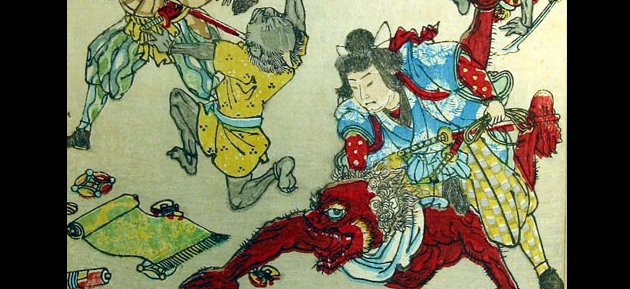
The Myth: Share and share alike kiddies, according to this Japanese legend. Hundreds of years ago, an aging woodcutter and his wife lived in the hills.
One day, his wife saw a peach bobbing along in the river and took it home to give to her husband. But when she offered hubbie dearest the fruit, it split in two, and a baby was born. Deciding to raise the child as their own, they called him Momotaro, or Little Peachling.
Growing to be strong and stalwart, Momotaro decided to go on a quest to the ogres’ island to steal their riches. His parents made him some dumplings and bid him a good journey (as you do).
On the way, Momotaro first met a monkey, who asked him for a dumpling. In exchange the monkey would help him in his quest. Momotaro agreed, and the monkey joined him.
Then he met a pheasant, who bid him the same. Then a dog. Momotaro gave them both a dumpling and they walked by his side on the quest. When finally they arrived at the ogres' castle, the foursome worked together to conquer the ogres and drove them from their home.
Momotaro returned home with his riches, filling his foster parents with joy.
Standout Scene: We love a good battle scene, and the bit where the armour-wearing Momotaro, monkey, pheasant and dog lay seige to the castle would be fittingly extravagant. Sort of like the end of Labyrinth except with a bit more bloodshed and a few less rocks.
The Mermaid Of Zennor

The Myth: Here’s one from Cornwall. A lady who dressed in the finest of fineries in Zennor always had the church people wondering just who she was.
Nobody knew where she came from, and gossip and rumours hit fever pitch when she fell in love with Matthew Trewella and the two left town together. Trewella was never seen again.
But years later, sailors anchored near Pendower Cove saw a mermaid down in the ocean whom they recognised as the woman from church. Beckoning to them, she asked if they would move their anchor as it was blocking her house’s underwater entranceway...
Standout Scene: A scene where a young boy, curious to discover who the mysterious church woman is, follows her after a service through town. He attempts to keep up with her quick stride, mounting corner after corner, but eventually he comes to a standstill at the shore, where the woman has completely vanished...
The Snow Bride

The Myth: On a freezing winter night, Mosaku and his apprentice Minokichi became stranded in a forest, and holed up in a ferryman’s hut for the night.
During the night, Minokichi lay awake watching the snow drift outside. Then a woman appeared before him, deathly pale and attired in glittering white garments. She leaned over his master and breathed a cold breath into his mouth, killing him.
When the snow spirit turned to Minokichi, she spared him thanks to his youthful beauty, but warned that if he ever told anybody about that night, she would kill him. Then she vanished.
The next winter, Minokichi met a beautiful girl called Yuki. The two fell in love, married and had ten children.
One evening while sitting together, Minokichi told Yuki how he reminded her of a fair-skinned woman who had killed his master when he was 18-years-old. Yuki flew into a rage quite unlike her usual composure, admitted that she was the one who had killed his master, and scorned him for breaking his promise.
Shrieking like a loon, she promised that if he ever complained of anything again, she would return and kill him during a snow flurry. Then she disappeared into the night.
Standout Scene: The shiver-inducing, near-silent midnight moment in which the snow spirit first appears in the haze of winter and kills Mosaku.
Josh Winning has worn a lot of hats over the years. Contributing Editor at Total Film, writer for SFX, and senior film writer at the Radio Times. Josh has also penned a novel about mysteries and monsters, is the co-host of a movie podcast, and has a library of pretty phenomenal stories from visiting some of the biggest TV and film sets in the world. He would also like you to know that he "lives for cat videos..." Don't we all, Josh. Don't we all.


